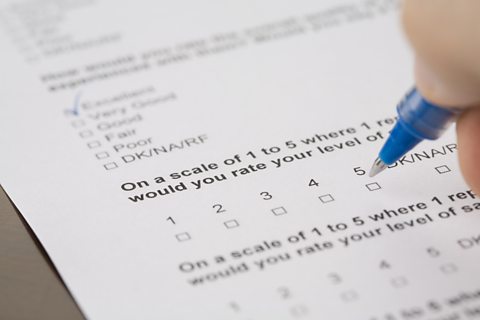Monitoring Standards
No one likes to receive a complaint; however, it can be used to improve the overall standard of service that is being provided by the outlet.
The business needs to correct any issues or concerns regarding the quality of products or standard of service they are providing and the best way to find out this information is from the customers and employees.
It is important to remember that customer service is critical to the success of any business within the hospitality industry so it's important that regular checks on the standard of customer service are carried out.
There is a range of methods a business can use to obtain this information.
Verbal feedback
A business can gather information on how customers rate the service they have received by asking them. It is important to listen carefully to what the customer has to say and ask probing questions to gather as much information as possible.

The most common time to ask for feedback is when a customer is paying at the till.
It is also important to listen to the tone of voice, observe facial expressions and body language as these often express true feelings.
Mystery customers
A mystery customer is employed by the organisation to note the standard of service provided and give detailed feedback on their experience.
The mystery customer will work through a checklist of points and provide an assessment of a typical customer’s experience. The employees are unaware of the mystery customer to ensure that the feedback on the establishment is accurate.
Comment cards
Comment cards are generally short and easy to complete as the questions are very specific and rating scales are often used.
This provides the business with an instant source of feedback and the results can be analysed quickly by management and discussed with staff members.
Questionnaires
QuestionnaireA collection of written or printed questions with an answer choice made to conduct a survey. are used to obtain more detailed information from guests. They may be given to the guest during check out or may be sent to the customer afterwards.

Time and consideration must be given to the layout of the questionnaire and the type of questions used to ensure the customer is not overwhelmed with the level of information required.
Some outlets will provide incentives if the questionnaires are completed, such as discount vouchers.
Surveys
A SurveyThe evaluation of experiences or opinions of a group of people via questions. is used to gather information from individuals in a structured format whilst ensuring that all customers will be asked the same questions in the same layout.
Surveys can be conducted via the telephone, by post, face to face or on-line and allow businesses to obtain answers to specific and important questions that will help them to improve.
Observing staff practices
This process involves management observing their staff to determine how effectively they are carrying out their roles.
The employee will then receive feedback which will help continue with the good performance identified, develop new skills, identify areas of training or the need to improve the performance.
Social media reviews
Social media provides the opportunity for customers to share information, including their thoughts and opinions on a business.
It is very easy and convenient for potential customers to view the information that has been provided and make an informed decision. It also allows organisations to market their business and communicate with potential customers